Finding Darkness
We’ve lit up the night to the point where darkness itself is endangered. Finding Darkness takes you on a journey into the world of insects; tiny navigators bewildered by our obsession with brightness. From confused moths circling porch lights to entire ecosystems teetering because of our LED addiction, this post unpacks the insect apocalypse hiding in plain (fluorescent) sight.
Anindya Chaudhuri
4/18/20253 min read
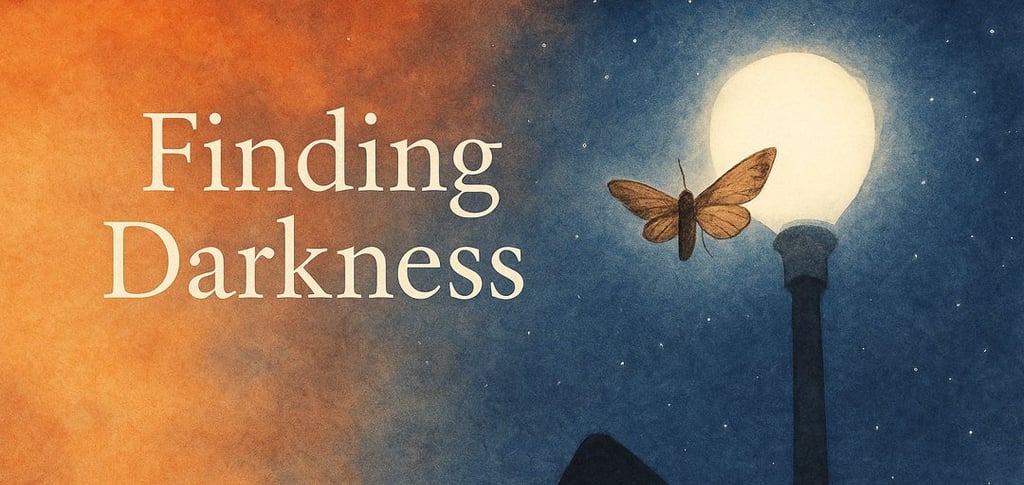

When was the last time you truly saw night?
Not the fuzzy orange glow above the city. I mean real darkness. Deep, silky, scattered with stars. When was the last time you saw the milky way? Not on a screen, but on the sky's canvas?
If you're squinting into memory’s void, you’re not alone. Darkness is disappearing. And strangely enough, that spells disaster for… bugs.
Yes, bugs. And incidentally, Us.
Can We Find Darkness Again?
Yes, we can.
Cities are adapting: Warmer bulbs, Directional lighting, Motion sensors, and other modern solutions.
Small tweaks, big results.
You can help too:
Switch porch lights to amber LEDs. Reddish, warm lights are less harmful.
Use light only when needed.
Host a stargazing party instead of another scrolling marathon.
Darkness isn't scary. It's rare. It's beautiful. It's necessary.
A Gentle Nudge
Our love for light might have pushed darkness, and insects toward extinction.
But it’s not too late.
Darkness isn’t the enemy. It’s a habitat. A rhythm. A kind of magic.
So tonight, step outside.
Turn off the lights.
Look up.
The stars are still there. They’re just waiting for you to notice.
The Flip Side of Light
We adore illumination.
Streetlights, neon signs, screens everywhere. Humans are basically moths with bank accounts.
And speaking of moths… they’re struggling. Along with all other nocturnal insects.
That frantic spiral they do around your porch light? That’s not dancing. It’s distress.
To a moth, our LEDs are deadly siren songs. They're drawn in, disoriented, and often die circling fake moons they were never meant to find.
A Little Science (Pain-Free, I Promise)
Most nocturnal insects use the moon and stars to navigate.
Artificial light, especially cool-toned LEDs, completely mess up their moon-powered GPS systems.
They spiral endlessly. Burn out. Die.
They become easy snacks for predators lurking near lit areas.
Insect populations have crashed by almost 40% globally in recent decades.
And light pollution is no longer an afterthought. It’s a smoking gun.
Why Should You Care?
Sure, bugs can be annoying.
But no bugs mean: No pollination, No fruit, No flowers, No coffee, and No functioning ecosystems!
Insects hold the food web together. And our quest to erase shadows is quickly unraveling it.
Perhaps we didn’t mean to, but that’s the thing. Light pollution is a silent killer.
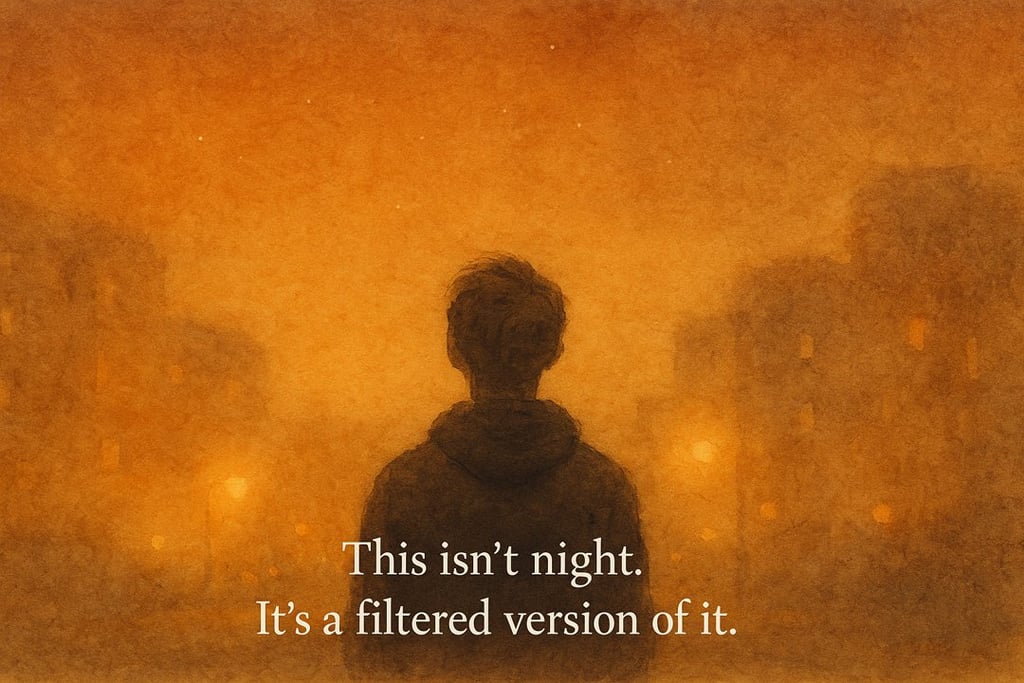

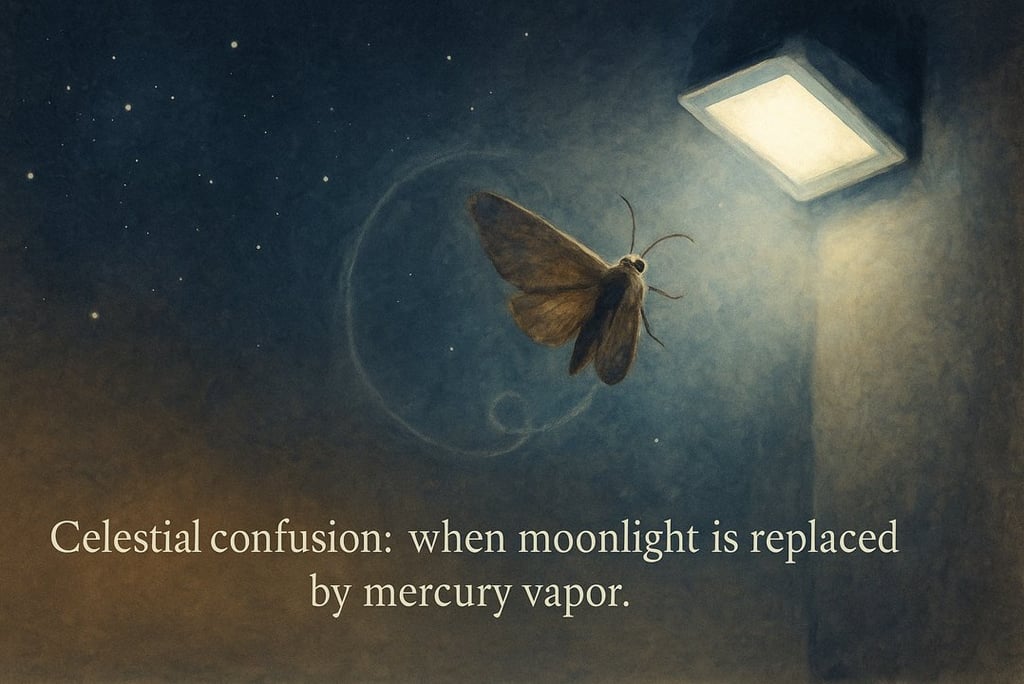

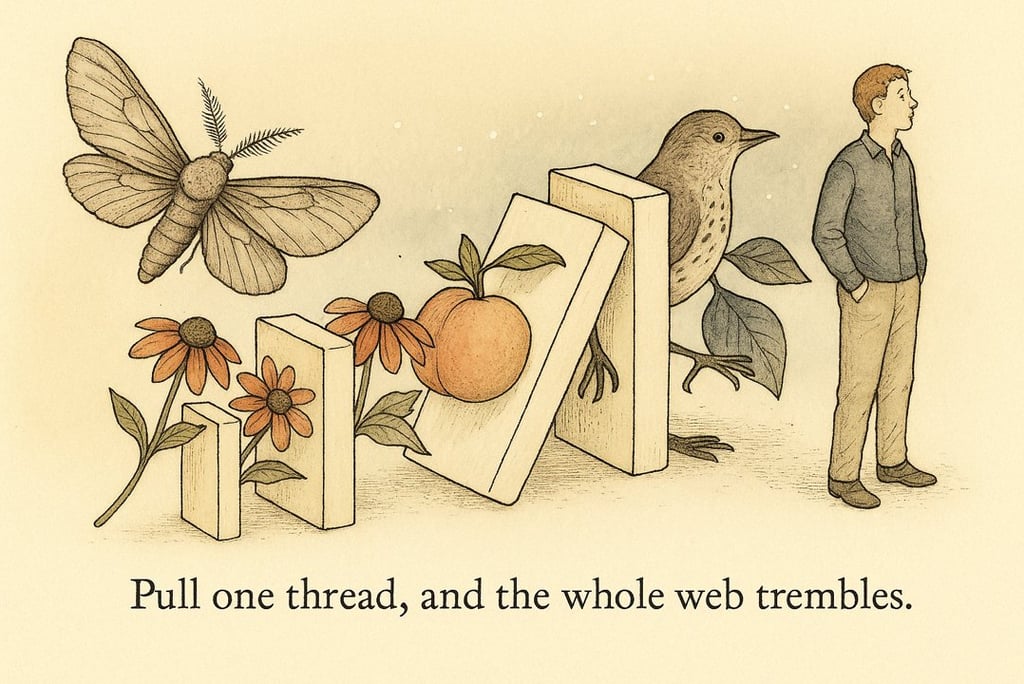

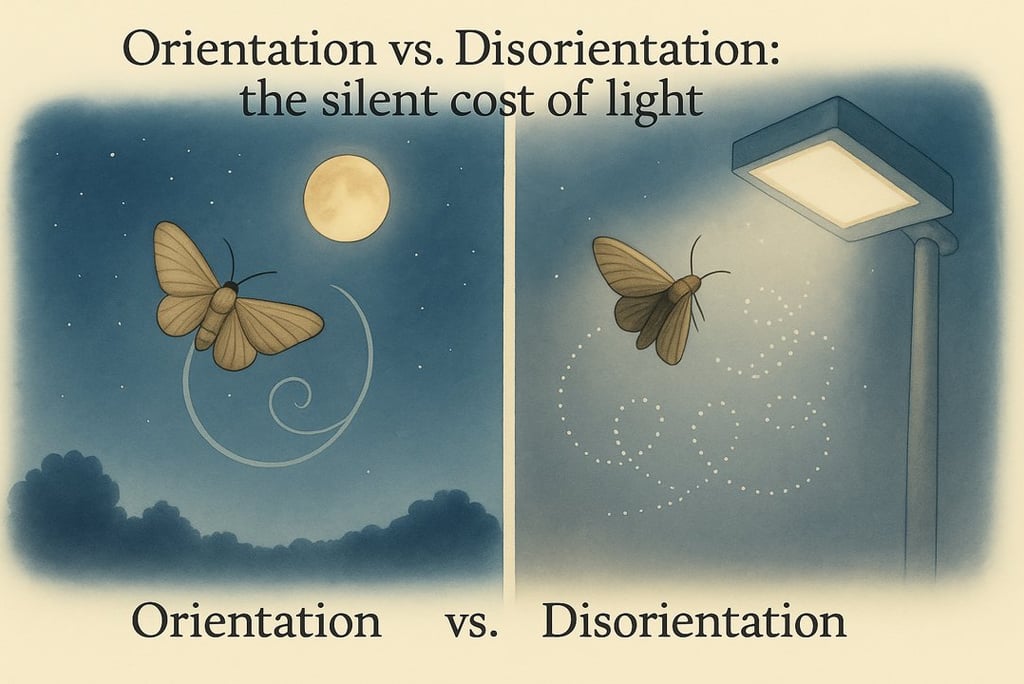

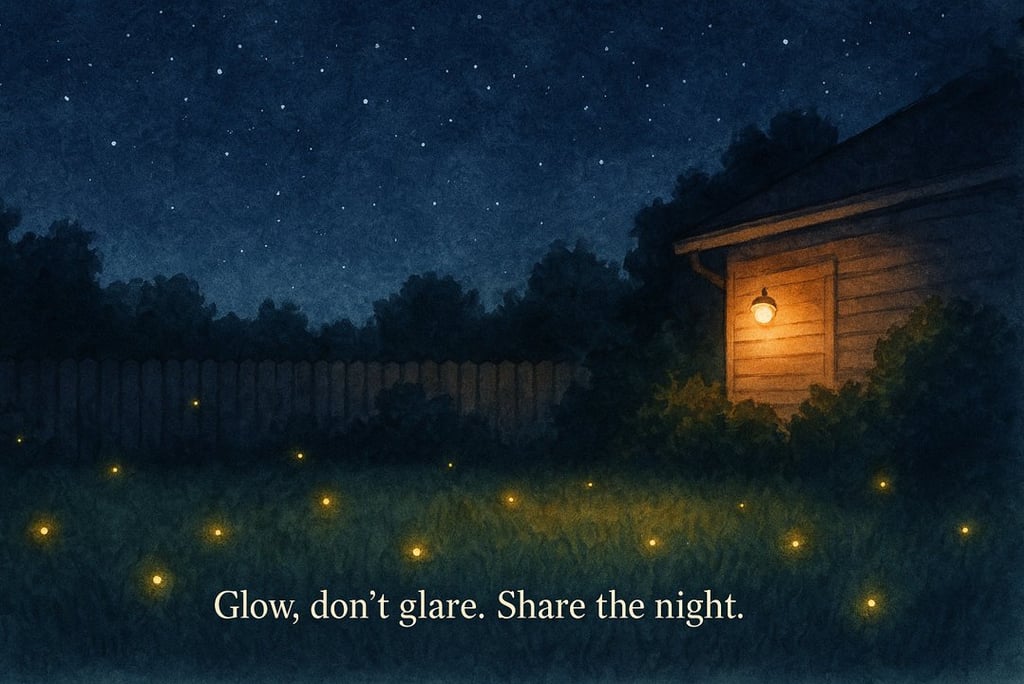

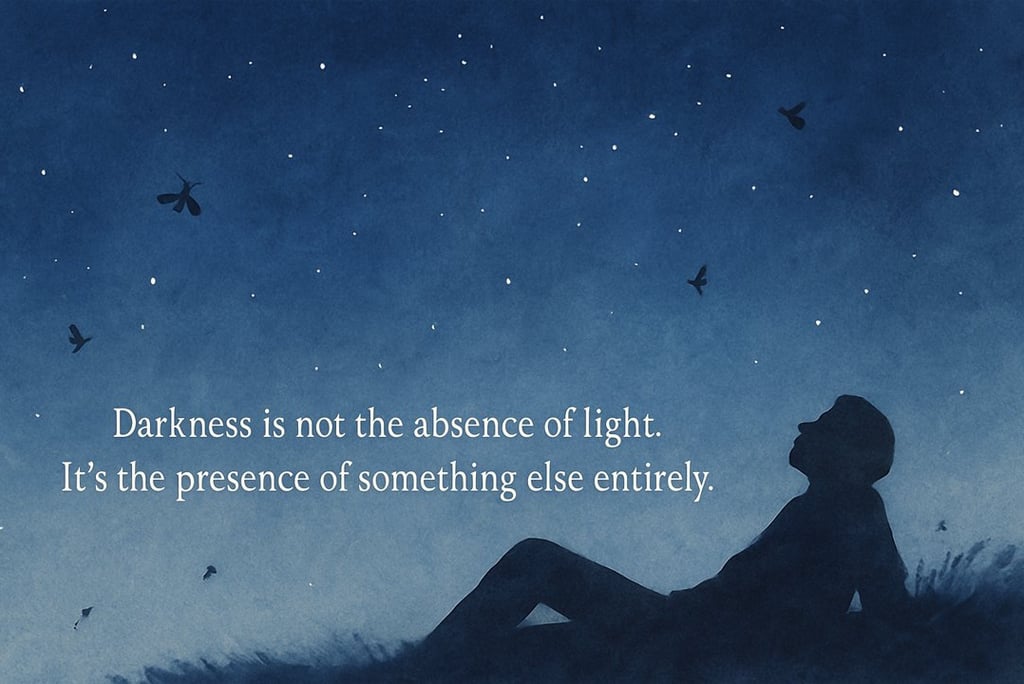

Written by Anindya Chaudhuri
Founder, Permaregen | Regenerative Designer | Educator
Further Reading
The End of Night by Paul Bogard
Bugged: The Insects Who Rule the World by David MacNeal
International Dark-Sky Association: www.darksky.org
Journal of Insect Conservation – Special Issue on Light Pollution
Community
Join us in exploring regenerative agriculture practices!
Write to Us!
Sign Up for Our Newsletter!
connect@permaregen.com
© Anindya Chaudhuri 2024. All rights reserved.
